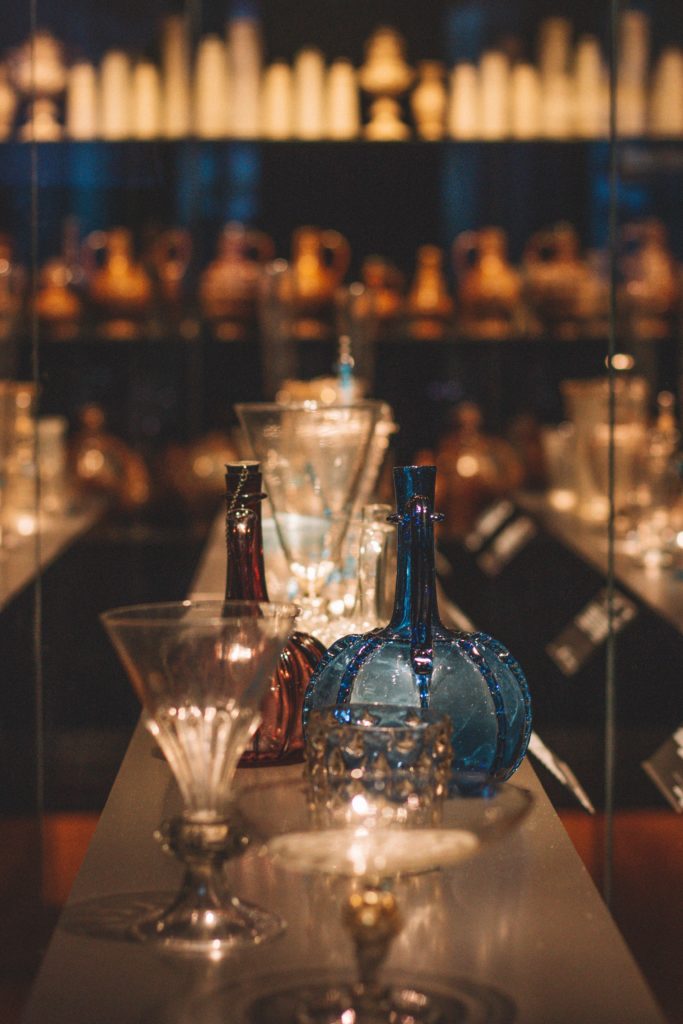
There surely is a lot of vintage glass in the world. You see it at consignment stores, antique shows, thrift locales. It’s everywhere. It comes in so many forms and in so many colors that it’s mind-boggling. Because of the sheer volume of vintage glassware, if you’re in the market you’ll want to know what you’re looking at when you’re out there hunting. This primer, on some of the major types of vintage glass, will help you to identify vintage glassware that might be worth your money. Enjoy the hunt!
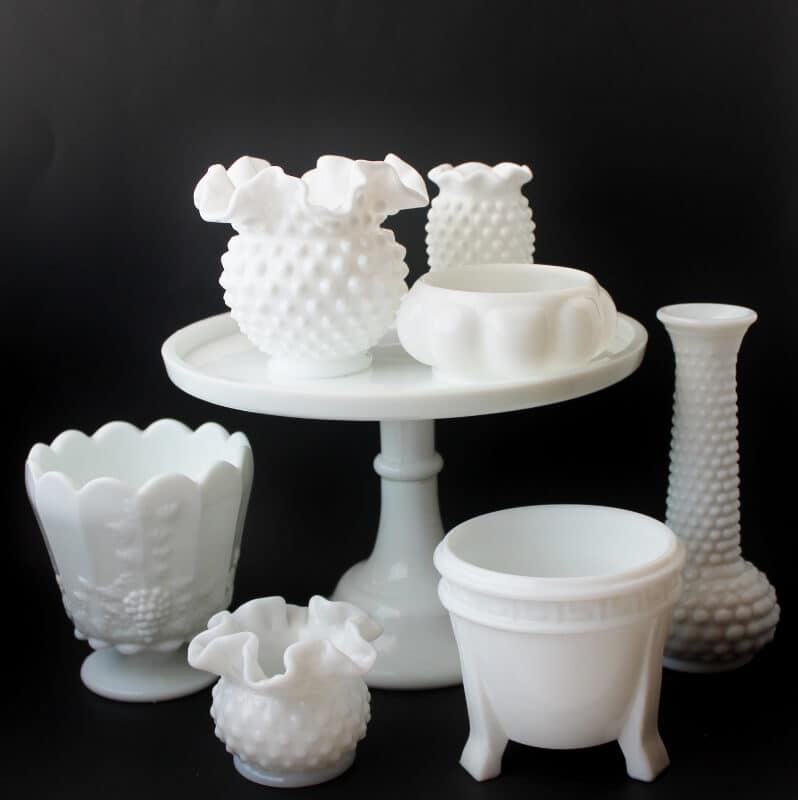


How To Identify Vintage Glassware: If It’s Opaque White… It’s Most-Likely Milk Glass.
Milk Glass gets its name from its color – it’s white, opaque glass. Originally created as an alternative to porcelain in 1500’s Italy, Milk Glass has been popular on and off since then. Although associated with the white, opaque glass, there is such a thing as colored Milk Glass but it more-often goes by other names when it is represented in other colors (like Jadeite, below).
Today, most Milk Glass forms are very utilitarian. You can find Milk Glass in bud vases, compotes, butter dishes and salt and pepper shakers. Many people who collect Milk Glass use it daily as it comes in so many shapes and sizes and is relatively inexpensive. There are many patterns of Milk Glass, and some people chose to only collect Westmoreland or Fenton and some people chose to collect a pattern, like hobnail. It’s fairly safe to say that Milk Glass can be found in every thrift and consignment shop in America and it’s an easy to identify vintage glassware type.
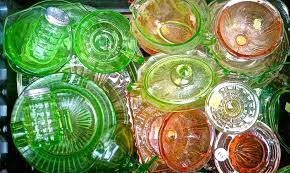


What’s All That Colored Glass? Often Times It’s Depression Glass – But Be Careful.
Depression Glass refers to machine-made glass produced in the United States between 1929-1939 (Great Depression Era) that was cheaply produced and then given away inside of products, like cereal, or at places of business, like movie theaters. The most common colors for Depression Glass are clear (crystal), pink, pale blue, green, and amber. Less common colors include yellow (canary), ultramarine, cobalt blue, red (ruby and royal ruby), black and amethyst.
Depression glass forms are mostly dishes and glassware used in eating and drinking. Depression glass was made in more than 100 patterns and has been reproduced and continues to be reproduced, copied and faked. Beware if you’re paying a lot and/or you’re unsure.



What’s That Shiny, Lustrous Glass? It’s Called Carnival Glass.
Carnival Glass first appeared in 1907 as a inexpensive alternative to Tiffany Glass. People didn’t see a lot of value in it, at first, so it was often given away at carnivals – hence the name. Fenton Glassworks, of Marietta, OH, made the first Carnival Glass.
Carnival is prized for its lustrous quality that is created by spraying the hot glass with metallic salts before firing. The sheen that is created changes color when pieces are viewed at different angels. Carnival glass comes in many colors including amethyst, reddish purple, blue, green, red and amber. The most common color is orange.
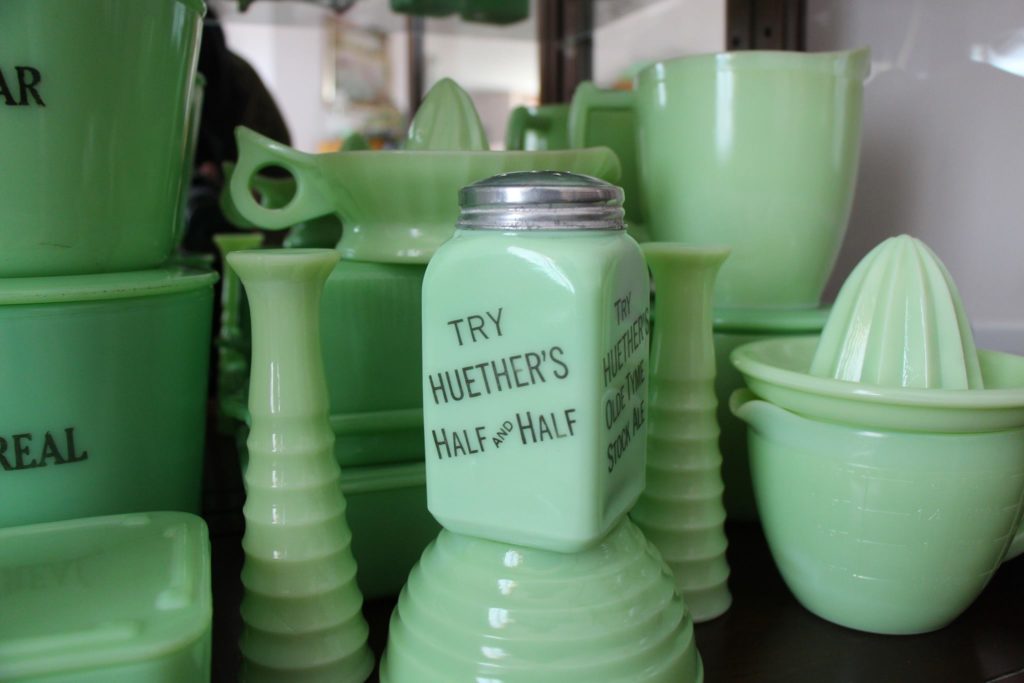


How to Identify Vintage Glass: If It’s Green and Opaque It’s Usually Jadeite.
Jadeite should thank Martha Stewart. The grand diva of homemaking collects Jadeite. She has made it exceptionally popular beginning in the mid 1990’s. Jadeite is also known as Fire King Jade-ite. Jadeite is a Jade-green opaque milk glass. The most popular forms of Jadeite are kitchen items like mixing bowls, cake stands and shakers of all types. Many people, like my friend Martha, collect Jadeite as a decorative glass for use as accents in their kitchens.
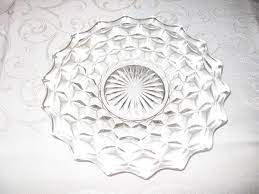


And Finally We Have Elegant Glass
Elegant Glass was made during the same period as Depression Glass and beyond until the 1950’s. It was more expensive than Depression Glass and better made. Much Elegant Glass was at least partially hand-made and made from higher quality materials that resulted in finer quality glass in more vibrant colors than Depression. Fire polishing was used on Elegant Glass to take out many of the common flaws found in pressed glass. Clear Elegant Glass is common and it was also made in red, blue, green, amber, yellow, smoke, amethyst, and pink. Major manufacturers of Elegant Glass are Fostoria, Cambridge, Fenton and Heisey among others.
For more on glass, check out my previous blogs: What You Need To Set Up A Home Bar and Choosing The Right Glass For The Right Drink.
Now For A Little Music Before We Go…
“The intellect of the wise is like glass; it admits the light of heaven and reflects it.”
Augustus Hare


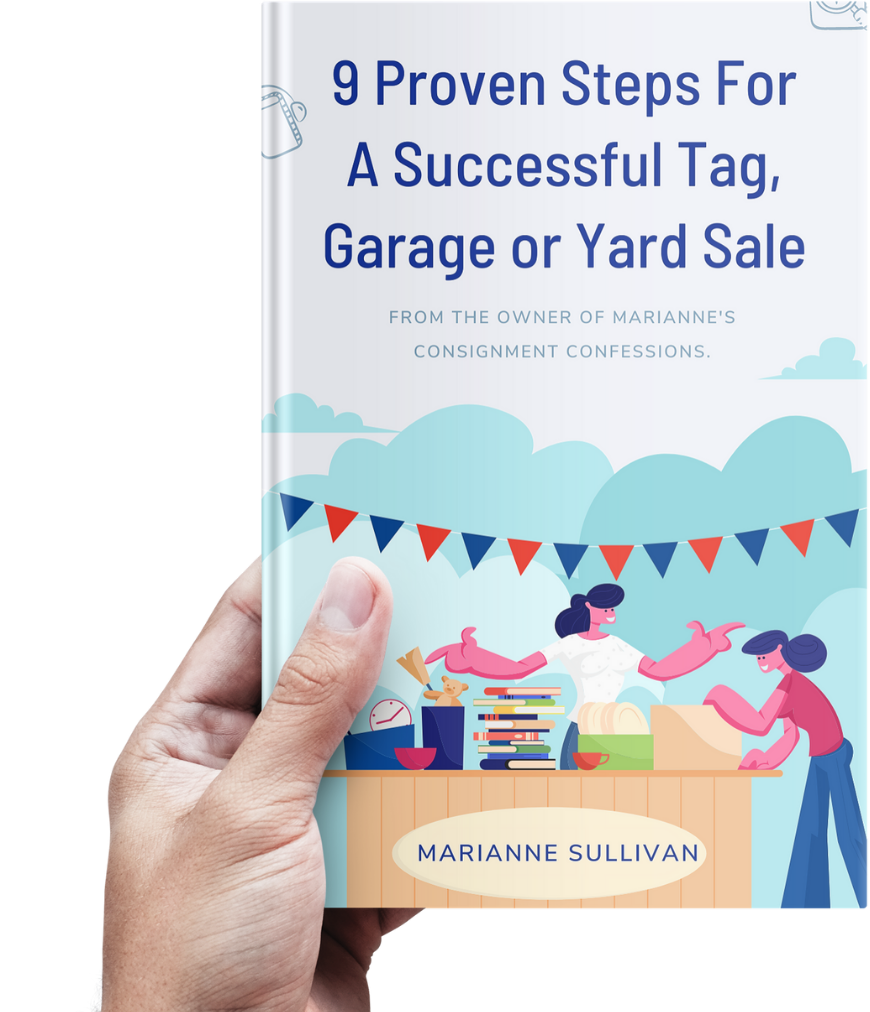


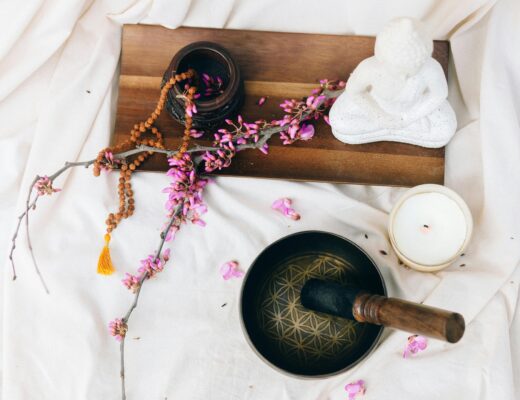


No Comments